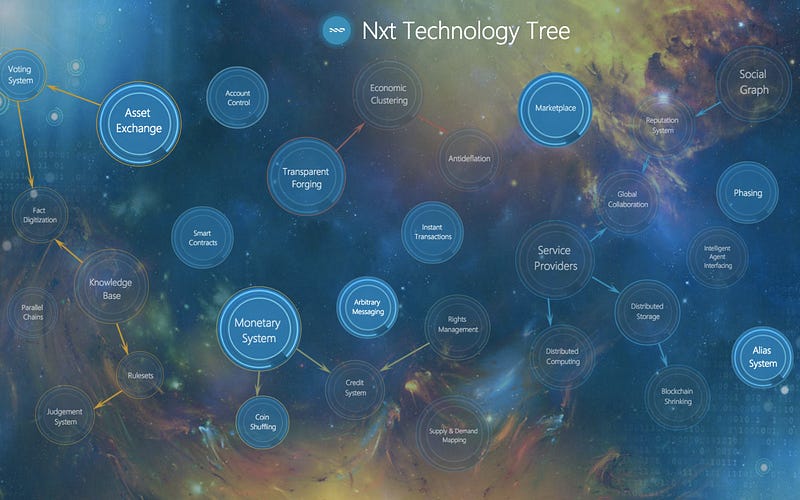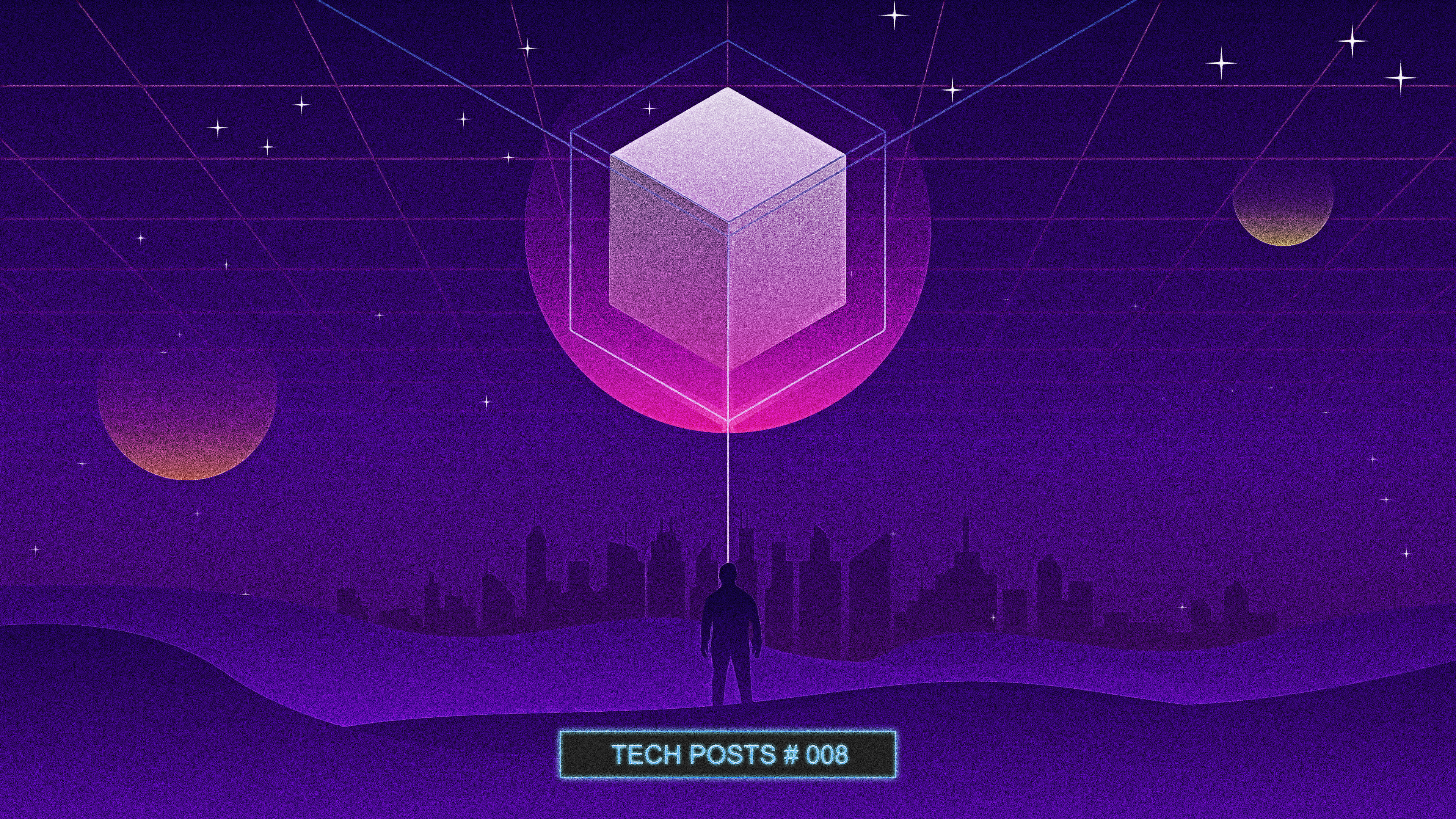- This story was first published in LinkedIn on December 13, 2015 https://www.linkedin.com/pulse/my-dream-decentralised-business-network-roberto-capodieci/
The story of DeBuNe.org and the day I met with Nxt.org

Early business success
I began my IT entrepreneurial career when I was still in my teens. By the age of 20 I was running an office with almost 40 developers and software engineers.
My business partner, who covered the creative aspect of our business, was a talented illustrator and graphic designer with a passion for comic books and video games.
We had the usual joint signature controlled bank account and an ATM card each, with a monthly withdrawal limit, which we used as a way to control our expenditure.
Trust was a necessary condition for our success: trust of each other and of the people and institutions we relied on for our business: the bank, the phone company, the accounting firm, our suppliers, and our clients.

Human-based problems
Things were getting better and better and the money was pouring in. Unfortunately it wasn’t long before jealousy and resentment sprung up and started poisoning our working relationships. Trust in other people, so essential to the continuing success of our conventionally operated business model, started to fade away and then one day vanished completely following various incidents of dishonesty.
From fake accounts of who did what or who said what to whom, to actual fake accounting, my dream come true of running a successful IT business had now become a nightmare. Somehow my business partner managed to get some company cheques paid even though they had been signed only by him, leaving the company with a huge debt with the bank, and consequently with suppliers and those who were working with us. Our successful business, which had lasted 7 years, was now effectively finished.

What had gone wrong?
(if the above illustration caused confusion, no worries it is just an image)
The fundamental problem was inherent and, at the time, irremediable: we were, of necessity rather than choice, still living in a world of corruptible paper-based information and rule enforcement which was wholly dependent on human honesty and competence rather than mathematics.
So it was that the bank had failed to respect our agreement with them (paying cheques only if signed by both company directors), simply because it was up to a human to decide if that rule should have been enforced or not. The company’s viability was further compromised by the inevitable gossip, whose pernicious effect was made worse by false information which in practice was impossible to refute, given the absence of a public repository of digitally signed declarations.
After such a traumatic experience, I have since lived by the rule that, for me, “the ideal number of business partners is an odd number lower than 3” (i.e. 1)

Pre-blockchain solutions (email and PGP signatures)
I dreamt of a future where it was no longer necessary to have to trust third parties in matters of business. A future where there was no need to guess if a signature had been forged or not, where I could rest easy knowing that nobody could steal from the company’s bank account, a future where if an agreement was made, it would be respected no matter what.
Such were my dreams during the first years of the Internet; years that were characterized by the slow and noisy dial-up modems that I had previously used only to connect to BBS or packet networks.
Email technology, as well as providing us with the convenience of near-instant written communication, effectively moved agreements away from being exclusively recorded on paper (or thermal fax paper) to being recorded in a searchable set of digital data, with timestamps and a sort of guarantee as to the identity of the originating party. I could now say: “Hey, this is what we agreed on such and such a date. Check your emails”.
Then came the PGP signature: cryptographic certification that the content of an email hadn’t been tampered with by someone with access to the mail server. I loved it. I loved emails for their federated network structure. There wasn’t a unique central Mr Mail authority, but a network of many mail servers, each serving a portion of the total email users.

The genesis of DeBuNe
—?a solution in search of a technology to deliver it
It was the success (albeit limited) of the ‘pre-blockchain solutions’ that gave me the idea for what turned out to be DeBuNe, but, at the time, the technology needed to give effect to my idea (i.e. the blockchain) didn’t yet exist.
I used to think to myself: if only each mail server in this federated network had a copy of all the emails ever sent, then yes, we would have a replicated dataset and nobody could cheat, either regarding an email’s contents, or its metadata: who sent it, at what date and time, etc. If I sent an invoice to my client and he replied with a promise of payment, and that information was unchangeable and digitally signed, then there could be no possible dispute as to what had been agreed.
Some of my other more wild imaginings included: if only my client could have sent me the payment via email…If only contracts to hire people and the salary agreements were supported by a network of servers, similar to those used for emails, but specifically for legal documents and financial agreements… I could then use such a network to manage my company, do away with the need for banks, seal agreements with my partner and the people working with me, set up special contracts, that were regulated by software which managed the financial and decision flow automatically, with the agreement of the parties involved being irrevocably and irrefutably evidenced by their digital signatures…

Bitcoin: a ground-breaking step in the right direction
When Bitcoin came out, I must have been among the first to cry “Eureka”, not so much for the cryptocurrency, but for the blockchain?—?this was a simple yet awesome solution to the decentralisation problem. I saw here the possible beginnings of that network for legal agreements and financial flows I had been dreaming of ever since human fallibility had put an end to my early business success.
However, while I find very romantic and amazing the algorithms and logic of Bitcoin’s blockchain technology and how it has made decentralisation a practicable reality, I don’t approve of the Proof of Work approach (which, to me, is a waste of electricity and computer power). Moreover, the Bitcoin blockchain was designed purely as a ledger of financial remittances, it is not structured to support the far bigger data sets and transaction logics that DeBuNe needs in order to operate.

Nxt?—?the complete decentralised business solution
I had to find a blockchain based solution that did more than just financial transactions…. and after some searching I found exactly what I was looking for: Nxt.org
DeBuNe.org (the Decentralised Business Network) could now finally see the light of day because Nxt really is a revolutionary tool for businesses?—?one that has more than I could ever have hoped for!
Specifically:
- the good old email (in Nxt called messaging), with the additional plus that each message is digitally signed by the author when submitted to the blockchain, and consequently timestamped simply by belonging to a precise block height. Messages can be private (encrypted), or public, so that everyone can see, for example, agreement between two parties or public records published in the blockchain;
- a marketplace, where the buyers and sellers of goods and services can be completely confident in the enforceability of the agreement between them, including all the steps needed to help deliver the goods, offer a discount, or reimburse the buyer;
- a voting system to allow a company taking decision and giving voice to both employees and clients (the amazing possibilities on how a vote can be casted, and the consequent automated actions that can be programmed with Nxt, are worth a full dedicated post);
- a monetary system to create tokens or credit or currencies in seconds, that can be used for many different needs in both organising, authorising, and controlling business processes;
- an asset exchange that offers the opportunity to the wide public to invest in a business or own a portion of an item, and trade its assets in a open and secure market, available 27/7;
- an alias directory that works as DNS or even a contact list;
- a tool to digitally sign text or data, and verify digitally signed text and data, to match a user digital identity in the Nxt blockchain, and yet to be used outside the Nxt network!
- and, last but definitely not least, it has the capacity to let user install plugins, for custom needs and expanded uses.
Nxt is indeed the most amazing decentralised tool for businesses that knows no borders, no central authorities, and no risks of fraud. Sometimes it is worth remembering that all that runs on an open blockchain, which having no central authority, is therefore genuinely decentralised and democratic!
With its API, and hundreds of endpoint calls, Nxt is an easy tool to integrate with other software solutions to implement the perfect tools for each business need.
While Nxt is a working product used by many, it is also a work in progress with an incredible future ahead! Check http://nxttechnologytree.com to see the new cool features being planned for Nxt:

Furthermore, Nxt already has a 2+ year 100% stable and reliable operational track record and that’s all the trust that’s needed.
If only it had been invented 25 years ago!
(below, myself in 1989, in possibly my first selfie)

Written by Roberto Capodieci
Edited by Robert Bold
Footnotes
- DeBuNe is a technological implementation, built on a fork of Nxt’s NRS (aka node software or core), that decentralises business processes so that multiple parties can work together ‘trustlessly’. The key components include:
- digital identities, with digital signatures.
- relative distributed KYC mechanics (for example the project TheSoundKey.com is a spin off from DeBuNe to safely manage digital signatures).
- decentralisation thanks to the blockchain.
- form editor and workflows designer to manage the business processes.
- DeBuNe technology is used for FinTech solutions such as OTDocs.com.
- For more information about the Nxt second generation cryptocurrency platform visit: http://nxtwiki.org/wiki/Main_Page

